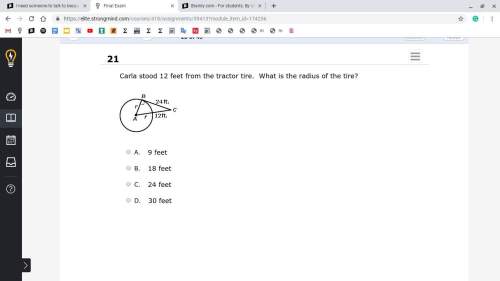Given: g ∥ h and ∠2 ≅ ∠3
Prove: e ∥ f
Horizontal and parallel lines e and f are in...

Mathematics, 19.03.2020 10:33 SESDMANS9698
Given: g ∥ h and ∠2 ≅ ∠3
Prove: e ∥ f
Horizontal and parallel lines e and f are intersected by diagonal and parallel lines g and h. At the intersection of lines g and e, the bottom right angle is angle 2. At the intersection of lines h and e, the bottom right angle is angle 1. At the intersection of lines f and h, the top left angle is angle 3.
Statements Reasons
1. g || h 1. given
2. ∠1 ≅ ∠2 2. corresponding angles theorm
3. ∠2 ≅ ∠3 3. given
4. ∠1 ≅ ∠3 4. transitive property
5. e || f 5. ?
What is the missing reason in the proof?
vertical angles theorem
alternate exterior angles theorem
converse corresponding angles theorem
converse alternate interior angles theorem

Answers: 3


Another question on Mathematics

Mathematics, 21.06.2019 19:40
Which system of linear inequalities is represented by the graph?
Answers: 1

Mathematics, 21.06.2019 20:30
Which steps could be part of the process in algebraically solving the system of equations, y+5x=x^2+10 and y=4x-10
Answers: 2

Mathematics, 21.06.2019 21:00
From the beginning of the day the temperature rose 15 degrees so that by 4 pm it was 87 degrees. what was the temperature at the start of the day
Answers: 1

Mathematics, 21.06.2019 22:40
Suppose you are choosing a 6-digit personal access code. this code is made up of 4 digits chosen from 1 to 9, followed by 2 letters chosen from a to z. any of these digits or letters can be repeated. find the total number of personal access codes that can be formed. 492,804 341,172 39,917,124 4,435,236
Answers: 1
You know the right answer?
Questions



Biology, 19.05.2021 19:20








Mathematics, 19.05.2021 19:20

Business, 19.05.2021 19:20

Mathematics, 19.05.2021 19:20





Mathematics, 19.05.2021 19:20





